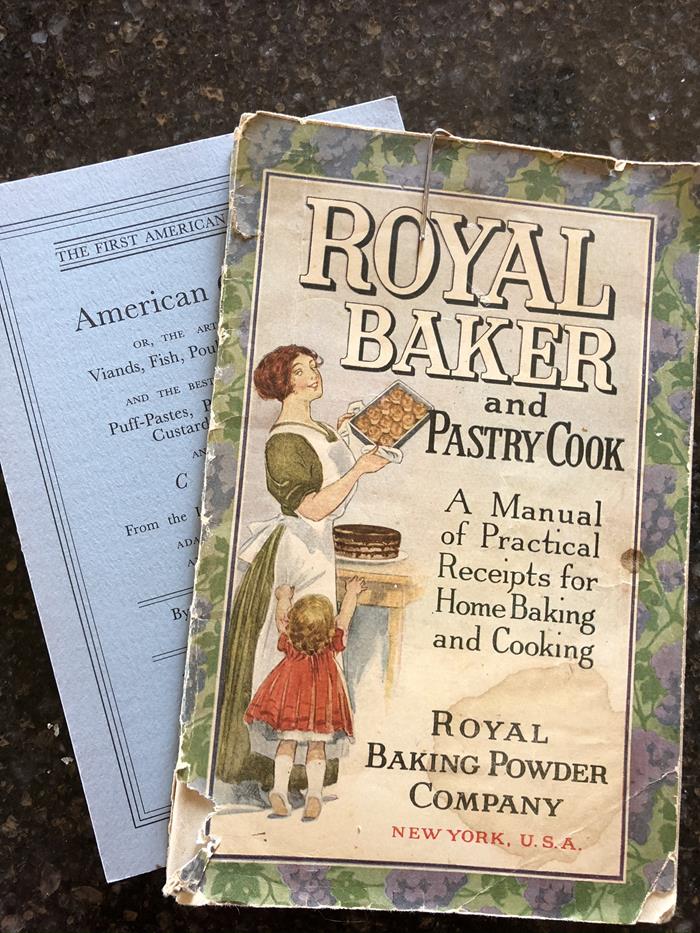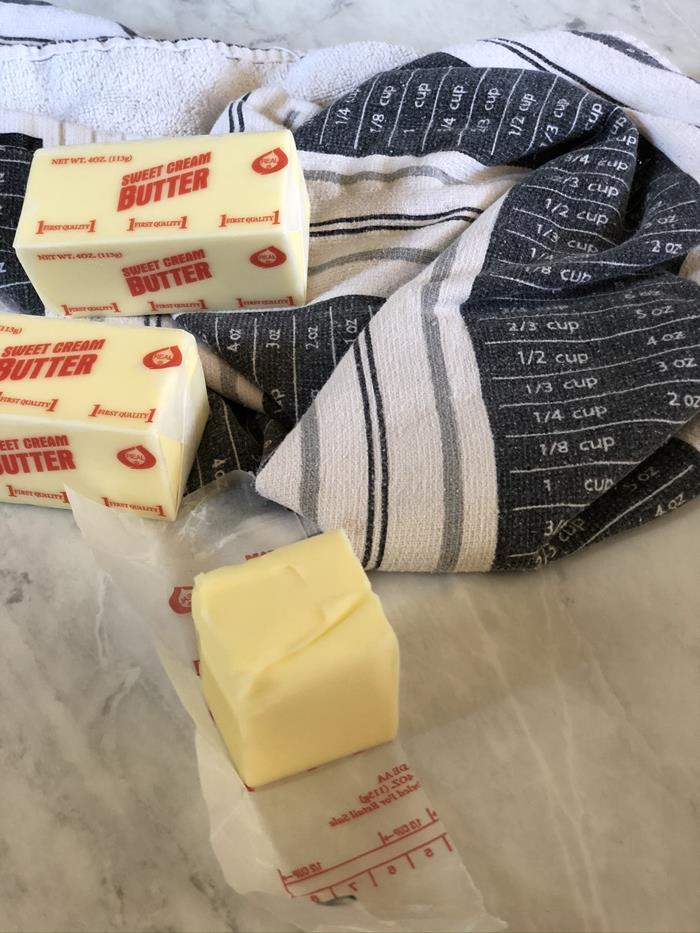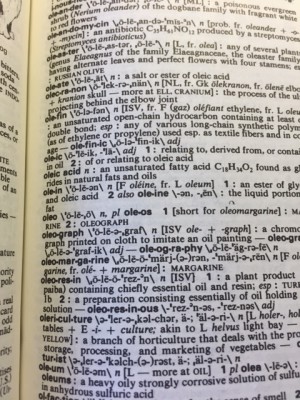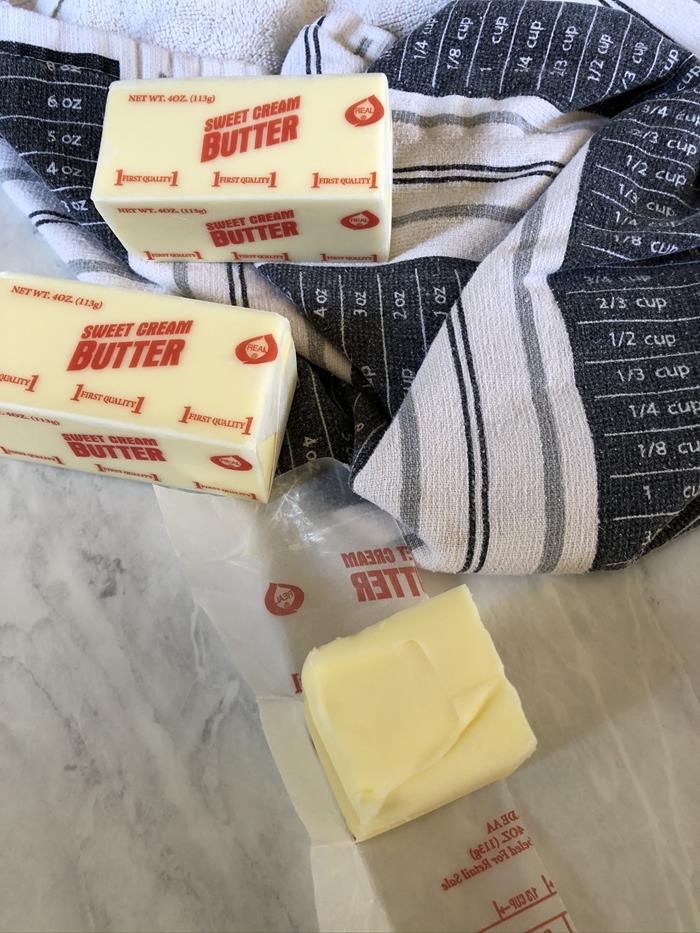Have you ever looked an older recipe and wondered what oleo is?

Do you know what oleo is?
I am guessing that some of you, if not many of you, know exactly what oleo is.
But as I have been going through some of my older cookbooks, I realized that there are some ingredients that are unusual and may turn people off from trying older recipes. I don’t want that to happen. Older recipes are often great recipes.
One of my goals for sharing my older cookbooks is to encourage people to start using some of the older, more vintage recipes because they are simple and classic.
Those recipe get back to the basics that many of us love. I don’t want people to get discouraged with older recipes just because they call for unusual ingredients.
Some of the ingredients in older recipes are odd. I will admit that some of the ingredients are things that we don’t want to use, but many of them have just changed names and can easily be replaced with modern day ingredients.
An example of this is oleo. I am guessing that some of you may not know exactly what it is.
If you look through old cookbooks or your grandmother’s recipe box, you will probably find a lot of recipes that call for oleo.
Or your mom or grandma may still occasionally say oleo as an ingredient when talking about a recipe.
So what is oleo exactly? A lot of people think that it is butter, but it isn’t butter.
Most of the time you can look at a recipe and realize that oleo is the fat in the recipe. But did you know that oleo is simply margarine? Yes, oleo is margarine not butter.
To get an exact definition for oleo I pulled a Webster’s Dictionary off the shelf.
Please tell me that someone else still uses the old fashioned real type of dictionary? We were homeschoolers for years, so I will admit that we have a shelf full of different types of dictionaries.
Old dictionaries. New dictionaries. And ones by different publishers. Sometimes I find it much easier to do it the old fashioned way and look up a quick word in a dictionary instead of weeding through all the links that google gives me. This time was one of those times.
So for an exact definition, according to my 1979 Websters dictionary, oleo is margarine, which is also known as oleomargarine.
Yes, it the same thing as regular old margarine.
The original name for margarine was oleomargarine. It used to be called just oleo. Then at some point, it changed to just being called margarine.
The popularity of oleo/margarine grew during wartime because of the shortage of butter. So oleo is not that odd of an ingredient after all.
Well, let me restate that. Oleo is not that uncommon of an ingredient. It is still a bit of an odd ingredient.
I will admit I am a butter person. I prefer the real thing over the fake one.
However, I grew up eating margarine. It was cheaper than butter and what we could afford to buy. Yes, I guess at times we could have bought real butter, but then we would have done without other important things to make up for the extra cost.
I totally understand why my mom bought it. Plus, it was promoted as a healthy thing back in the 1970’s and 1980’s. I think many of us grew up eating it.
I truly get why people buy margarine and I will not judge you for it. Seriously I understand the struggle of why people buy it. But I will admit that I love my butter and am very thankful that I have room in my grocery budget for it.
So back to what is oleo?
If you see oleo is a recipe it just means margarine. And here is the thing. I never use margarine, so when a recipe calls for oleo, or even margarine, I just use the real thing. Butter can be used in place of oleo or margarine in almost all recipes. I have never had a problem with replacing it.
In all the old recipes that I have tried from cookbooks and from my grandma, butter has always worked in place of the oleo.
So, when you see a recipe that calls for oleo, don’t be afraid to try it. Just use butter or margarine in place of it because it is the same thing.
Now I am curious did you know what it was?





Oh my. I haven’t heard margarine called oleo in a very long time. We grew up on the stuff, too. I clearly remember when my mom finally relented and started buying oleo in tubs for the table. Today I won’t use anything but butter. I even keep a stick out on the table (covered) at all times in the cooler months. There’s nothing like a hot biscuit slathered in real butter!
I had to laugh when I read “What is Oleo?” My mother called margarine oleo. She also called margarine ‘shortening’ if she was cooking with margarine So my question is ‘Do you know what shortening is?’ =).
My mom often called margarine shortening. I don’t think I ever heard her call it oleo, but my grandmother called it oleo.
My grandma called it oleo, too.
Husband’s grandma uses oleo in all her recipes. She’s in her 90s. She told me that in the early years, it was pale and came with a tube of yellow coloring so you could make it look like real butter.
I only use butter.
I know margarine is still regulated . When I worked at the grocery store in high school and college, we could sell individual sticks of butter, but not margarine–against federal law of some sort. That’s what the dairy manager told me.
I have older recipes referring to whole milk as sweet milk, too.
My grandmother who is about to turn 95 still says Oleo. I’ve heard it for all of my 41 yrs. It just popped in my head and I googled it to see if anyone else had ever heard it called that or if it was because my grandmother was half German. LOL. As for whole milk being equal to sweet milk , are you sure you’re the recipe isn’t calling for sweetened condensed milk? Even back in the day they had condensed sweet milk in a can that was shelf stable . Did you ever hear your husband’s grandmother call skim milk “blue John”?
Sweet milk is whole milk. Its typically a southern term. Im from the South and grew up hearing my grandmother use it when referring to whole milk. Its used to describe what kind of milk to use in a recipe or when talking in general. If the word sweet milk was said it meant whole milk and not buttermilk which is “ sour”.
Awesome! This is a great explanation.
I am familiar with oleo. My husband’s grandma gave me some of her recipes when I was first married, some of them listed oleo as an ingredient. She passed away several years ago so cherish those recipes and think fondly of her everytime I make one of her favorites.
I grew up hearing that come from my grandmom all the time. She and my mother told me stories about mixing in the coloring to make it more yellow. I grew up on margarine and remember thinking that real butter tasted weird. Now I’m just the opposite and use real butter for everything, and think margarine is tasteless. My mother swears that real butter makes the chocolate chip cookies go flat and shortening doesn’t.
My one exception is Land O’ Lakes spreadable butter which has been mixed with canola or olive oil so that it is spreadable at room temp, but the taste is all butter!
I believe the the original name for margarine was oleo-margarine. Somewhere along the line the oleo part got dropped. When I was a kid in the 40’s margarine came in a plastic wrapping and was white with a spot of dye in the center. You kneaded the package to mix the dye into the margarine to make it yellow. If I remember right, this was because the dairy people objected to the margarine being yellow. I don’t remember how old I was when we finally were able to buy yellow margarine. Since shortening was also white, I think that is way some people called both products shortening. Shortening was never meant to be a spread for bread, and margarine was. Now, of course, butter-flavor shortening is yellow. Thanks for the trip down memory lane. Butter is still best, however.
I used to call it that when I was younger! I have some old recipes that call for oleo and it brings back memories.
We grew up using oleo! I still call it that sometimes! I remember when growing up I preferred oleo to the real butter! Now, butter is all we use. We also keep a stick out on table for use in an old-timey covered butter tray.
I knew because I use a recipe of my mother’s that calls for oleo. Of course, I use butter, too. 🙂
My grandmother always called it Oleo, but I havent heard that term used in years. She went on to be with the Lord quite a while back. This sure brought back memories
I found a recipe written on the back of a tombstone and it calls for oleo. I knew what it was but was just checking. I am going to use butter instead.
Have you noticed that, over the years, the water content of margarine has increased? I’ve gone back to baking with butter for best results.
I Did! My mother used the term verbally and in her handwritten recipes. She was and outstanding cook and we didn’t think of the difference as we grew up using it appears you did too. Besides lower cost it was toasted as being healthier during those eras. I teach Adult nursing students as use the term oleo as a way for them to remember oligodendrocytes which are white in color. About half my students recognize the oleo term and the others don’t. Fun to see who does know! Thank you for your post!
Sorry for typos everyone!
Thanks for sharing.
I thought oleo was some sort of a painting or work of art!
I’m currently looking through an old church cookbook from the 70s and finding many recipes that call for oleo. I thought it was margarine, but googled to make sure. I grew up in the 80s and my mom always just called it margarine. I, however, use real butter now. Thank you for this article!
I am so glad that you found it helpful! And I love old church cookbooks. They are some of my favorite cookbooks.
Nice article 🙂 I knew what it was as I’ve acquired a few old family recipes that call for it, and looked it up some time ago. I always prefer real butter to margarine, But I’m about to make a cake that I grew up eating and my grandma brought everywhere to everyone. She was famous for this cake. Similar to a Texas quick cake. Anyways I want that icing to taste just like it did when she used to make it. And I know using either would work but there has to be some difference in taste and texture even if small. Guess I’ll be experimenting, first using “oleo” and then butter.
I love hearing about family recipes like this! I hope the cake turns out and is just like you remember!
Since I was born during the latter years of WWll, I am very familiar with oleo. I had 2 uncles who served in WWll. Dad always said, ” One came home; one stayed.” My dad, who loved to bake, always referred to whole milk as sweet milk so both oleo and sweet milk are referenced in his and mother’s recipes.Also b/c meat was reserved for our troops, we ate a lot of wild game and fish. There was a black market for meat, but I am proud of the fact that my parents refused to purchase meat on the black market. I have always loved seafood, but never developed a taste for the ducks dad returned with from hunting, which he did often. Though we lived in town (sort of) we had chickens and a cow for milk. He hunted rabbits and squirrels and there were times he raised them. Fortunately, we always had food b/c he had a large vegetable garden which he tended, and my mother canned vegetables, and she made fig preserves. Our fig tree we now have was rooted from that tree. We did not know it, but we were outside kiddos.
In the south, at least, we were all outside children, and we knew we had better behave both at home and when visiting.I
reared my offspring that way, and my grandchildren are being reared in like manner. Perhaps the pendulum will soon swing that way once more.
Thank you so much for sharing that! I love to hear stories about food, family, and history.